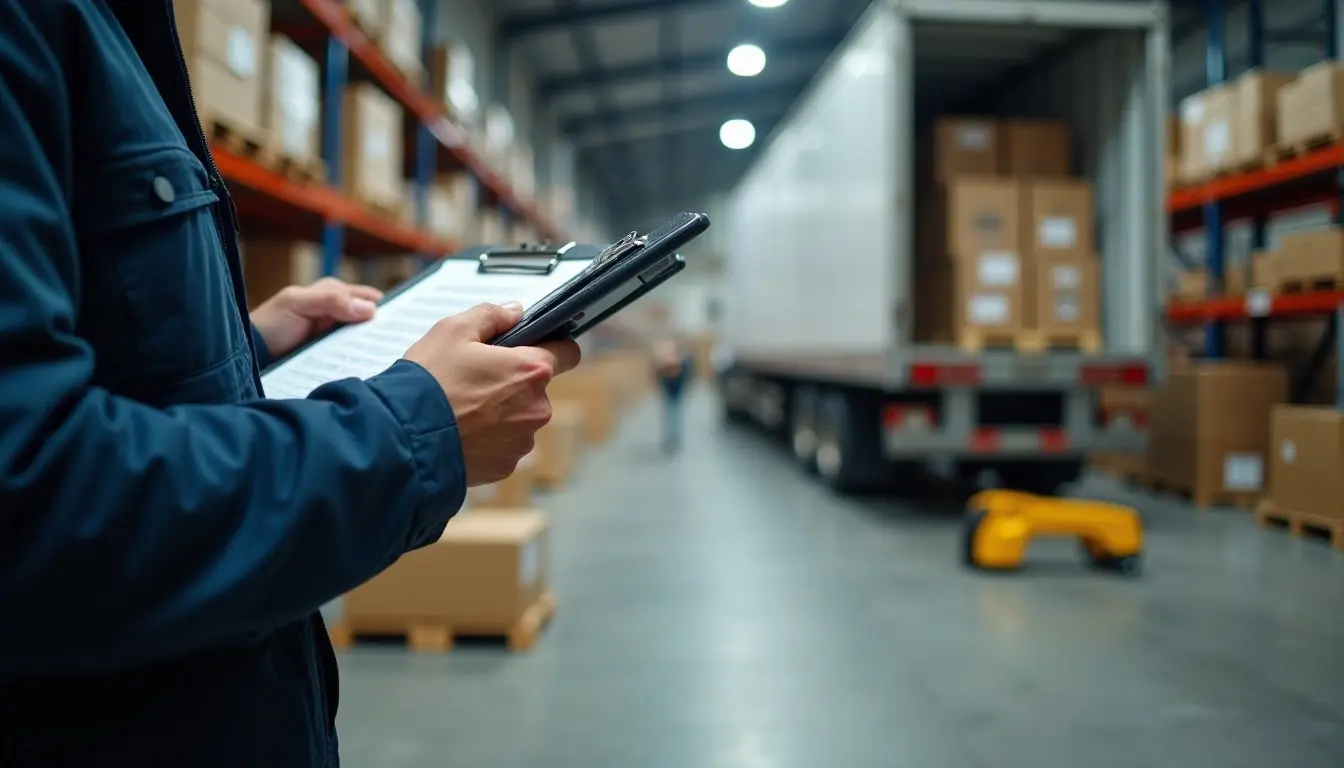LTL Freight Tracking Made Simple
Less Than Truckload (LTL) freight shipping offers cost efficiency and logistical flexibility by consolidating multiple smaller shipments onto one truck. However, one of the biggest challenges is tracking these shipments as they pass through multiple terminals and may be handled by several carriers along the way. When you send your products via LTL, a single misplaced pallet or delayed transfer can create a domino effect—leading to frustrated customers, increased costs, or missed deadlines.
This comprehensive guide walks you through the ins and outs of tracking LTL freight deliveries. From understanding the key terms like PRO numbers and Bill of Lading (BOL) to implementing technology solutions that offer real-time updates, we’ll explore every facet of LTL tracking. Our goal is to help you gain end-to-end visibility, reduce the risk of lost or damaged shipments, and streamline your overall supply chain process.
Why Tracking Matters in LTL Freight
Multiple Handlings and Transfers
Unlike Full Truckload (FTL) shipping, where one carrier typically handles the entire route, LTL freight often takes a more complex path:
- Pickup: Your shipment is picked up along with others.
- Consolidation Hub: Goods are sorted and loaded onto different trucks based on their destinations.
- Intermediate Terminals: Additional re-sorting and transfers can occur if the shipment is traveling a long distance or requires specialized routes.
- Final Delivery: The local terminal arranges the last leg to the consignee.
Every stage introduces potential risks—misrouting, delays, or handling errors—that tracking can help mitigate.
Reducing Risk of Delays and Misplacements
When you track your LTL freight diligently:
- Proactive Communication: If a delay or mix-up occurs, you or your carrier can address it before it becomes a major problem.
- Customer Satisfaction: Providing accurate ETAs keeps your customers in the loop, building trust and loyalty.
- Cost Savings: Swiftly resolving exceptions (like a missing pallet) cuts down on extra fees or expedited shipments to make up for the mistake.
Key Terms and Concepts
PRO Numbers, BOL, and Tracking IDs
- PRO Number: A unique, carrier-assigned tracking code for each LTL shipment. It’s akin to a “license plate” for your freight as it travels through different terminals.
- Bill of Lading (BOL): The contract between shipper and carrier detailing cargo weight, freight class, and other key info. Its reference often links to the PRO number for tracking.
- Tracking ID: Some carriers issue separate tracking IDs or might use the BOL number for online tracking systems.
Accurately matching the PRO number to your shipment details prevents confusion at terminals, reducing the risk of a lost pallet or partial shipment.
The Role of Carrier Portals
Many LTL carriers offer online portals:
- Real-Time Updates: You can see immediate status changes, such as departure from a hub or arrival at a terminal.
- Scheduled Notifications: Automated emails or texts can alert you to potential delays or required actions.
- Paperwork Management: Digital copies of BOLs, invoices, and delivery receipts remain accessible in one place.
Setting Up for Successful Tracking
Accurate Shipment Data and Proper Labeling
Before your freight even leaves the dock, ensure every detail is correct:
- Weight and Dimensions: Carriers often re-weigh, but providing accurate numbers from the start can minimize extra fees.
- Freight Class: Misclassifying can cause billing discrepancies and re-routing.
- Labels: Attach durable, waterproof labels listing shipper, consignee, and any special instructions.
Skimping on labeling or ignoring a small weight discrepancy can throw off the entire tracking process, leading to confusion at cross-dock facilities.
Communicating Pickup and Delivery Windows
Carriers typically operate on time windows rather than exact hours. By coordinating your warehouse or facility schedule:
- Staff Readiness: Ensure your team can load or unload promptly, avoiding detention fees.
- Confirmed Appointment: For sensitive deliveries (like high-value items or restricted-access sites), scheduling a firm appointment slot can prevent missed connections.
Technology Tools for LTL Tracking
Carrier Websites vs. 3PL Platforms
- Carrier Websites: Let you enter a PRO or BOL number to see real-time or near-real-time updates. Ideal if you manage a few carriers.
- Third-Party Logistics (3PL) Platforms: If you work with multiple carriers, a single 3PL platform can consolidate tracking data, streamlining your process.
Transportation Management Systems (TMS)
For advanced shippers, a TMS integrates seamlessly with carrier systems:
- End-to-End Visibility: Monitor inbound and outbound freight on one dashboard.
- Automation: Generate BOLs, dispatch pickups, and receive updates automatically.
- Data Analytics: Use historical data to spot patterns, optimize routes, or negotiate better rates.
Real-Time Visibility Best Practices
GPS-Enabled Trucks and Cross-Dock Updates
Some carriers equip their fleets with GPS:
- Live Location Feeds: You see exactly where your freight is on a map.
- Cross-Dock Scanning: Each pallet or container is scanned at transitional terminals, updating the central database in real time.
Automated Notifications for Customers and Shippers
Gone are the days of phone calls to guess shipment location. Automated systems can:
- Push Email Alerts: “Your shipment has left the Atlanta terminal”
- SMS Updates: “Shipment arrived at final terminal, out for delivery”
- Portal Dashboards: Real-time statuses visible to both shipper and consignee
This transparency fosters trust among all parties involved.
Handling Exceptions and Delays
Common Causes: Weather, Mechanical Issues, Overbooked Routes
LTL freight is especially susceptible to disruptions:
- Severe Weather: Hurricanes, blizzards, or flooding can hold up entire truck routes.
- Mechanical Failures: A single broken truck can create backups at multiple terminals.
- Carrier Overbooking: Too many shipments vying for limited space can push your freight to a later truck.
Proactive Communication with Consignees
As soon as you learn of a delay or an issue:
- Notify the Consignee: Provide a revised ETA so they can adjust staffing or accept deliveries later.
- Reschedule If Needed: Some carriers allow a second delivery attempt for a nominal fee.
- Escalate When Necessary: If the delay is critical, you may want to pay for expedited final delivery or seek alternative options.
Tracking High-Value or Fragile Freight
Additional Labeling and Handling Requirements
High-value or breakable goods may come with stricter demands:
- Security Seals: Tamper-evident seals on pallets or crates can detect unauthorized access.
- “Handle with Care” Labels: While not a guarantee, it raises awareness among carrier staff.
- Insurance and Declared Value: You might opt for extra coverage if the standard carrier liability isn’t enough.
Extra Security and Insurance Measures
Beyond standard cargo insurance, you could:
- Work with Specialized Carriers: Some providers focus on fragile or high-value shipments with gentler handling processes.
- Real-Time GPS Tracking Devices: Attach a small tracker to your crate for independent location monitoring, especially if the load is extremely valuable.
Dealing with Multiple Touchpoints
Cross-Docking and Consolidation Hubs
The more stops your freight makes, the higher the chance of errors. If your shipment passes through multiple hubs:
- Confirm Terminal Names and Codes: Confusion can arise if two facilities share similar names.
- Document Each Transfer: Ensure each handoff is scanned or logged, so you know exactly where your freight is at any given time.
Ensuring Data Accuracy Through Each Transfer
A single wrong scan can send your pallet to the wrong route. To minimize these risks:
- Regular Updates: Carriers typically update statuses at each terminal. Stay vigilant.
- Corrective Actions: If you spot an erroneous scan (like your freight suddenly jumping from Dallas to Miami unexpectedly), contact the carrier promptly.
Integrating Tracking into Your Supply Chain
API Connectivity and EDI Feeds
Modern carriers often support:
- APIs (Application Programming Interfaces): Let your in-house or cloud software pull tracking data directly, no manual input required.
- EDI (Electronic Data Interchange): An older but still common standard for automated data exchange among shippers, carriers, and 3PLs.
Leveraging Data Analytics for Route Optimization
If you handle frequent or large-scale LTL shipments, analyzing your historical tracking data can highlight:
- Consistent Delay Points: Certain routes, terminals, or carriers might show repeated slowdowns.
- Best Carriers for Specific Lanes: If one carrier consistently beats ETAs for certain regions, route more freight with them.
Tracking International LTL Shipments
Customs and Documentation Hurdles
Shipping LTL across borders introduces extra layers of complexity:
- Customs Brokerage: Additional paperwork, duties, and taxes can slow shipments.
- Trade Agreements: Freight might need certificates of origin or compliance with local regulations.
Maintaining Visibility Across Borders
- Unified Tracking Portals: Some carriers and 3PLs specialize in cross-border LTL, offering end-to-end tracking solutions.
- Multiple Carrier Handoffs: If you switch carriers at the border, ensure you have a plan for data handoff so visibility remains unbroken.
Security and Data Privacy
Protecting Your Shipment Information
In the digital age, each piece of cargo data—addresses, phone numbers, references—can be sensitive. Make sure:
- Logins Are Secure: Enforce strong passwords for carrier portals.
- Encryption: If possible, use platforms that encrypt data in transit and at rest.
- Limited Access: Only authorized employees or 3PL contacts should see detailed shipment info.
Following Industry Standards and Regulations
Depending on your cargo type (e.g., pharmaceuticals, electronics), you might need to comply with:
- HIPAA (Healthcare) if medical items are involved.
- PCI-DSS if you’re storing any payment data related to shipping costs.
- General Data Protection Regulation (GDPR) for shipments with European endpoints, focusing on personal data.
Common Mistakes and How to Avoid Them
Incorrect PRO Number Usage
Transposing or losing track of a PRO number can hamper your ability to see real-time updates. Always:
- Double-Check: Confirm the PRO number matches the BOL and the carrier’s records.
- List on All Documents: Place the PRO number on the BOL, invoice, and internal shipping forms.
Overlooking Transit Updates and Estimated Arrival Times
Failing to monitor your freight’s progress can result in:
- Surprises at the Dock: A truck arrives earlier or later than expected, catching your warehouse off-guard.
- Missed Chances to Fix Issues: Delays go unnoticed until it’s too late to expedite or re-route.
Working with 3PLs and Freight Brokers
Advantages in Consolidated Tracking
3PLs often integrate with multiple carriers, giving you a single platform to monitor:
- Status of All LTL Shipments: Even if they’re moving via different trucking companies.
- Additional Services: 3PLs can step in with alternate solutions if a shipment is delayed (like switching carriers mid-route for urgent deliveries).
Setting SLA Expectations for Timely Updates
If you rely on a 3PL or freight broker:
- Service-Level Agreements (SLAs): Clarify how frequently they must provide you with tracking updates.
- Escalation Paths: If a 3PL isn’t delivering updates in time, you need a chain of contact to resolve issues swiftly.
Conclusion
Tracking LTL freight deliveries is essential for maintaining smooth operations, especially in a shipping landscape characterized by multiple handling points and potential delays. By leveraging up-to-date carrier portals, robust labeling, and advanced technologies like TMS or APIs, you can achieve near-real-time visibility into your cargo’s journey. This reduces the risk of misplacements, accelerates problem resolution, and keeps your customers well-informed.
Moreover, tracking isn’t just about following a package on a map; it’s a strategic tool for improving your entire supply chain. Data gleaned from tracking can illuminate inefficiencies, highlight reliable carriers or terminals, and shape future shipping decisions. Whether you’re a small business sending occasional LTL loads or an enterprise managing a complex, multi-carrier network, investing in thorough, technology-driven tracking is no longer optional—it’s integral to cost savings, customer satisfaction, and supply chain resilience.
How useful was this post?
Click on a star to rate it!
Average rating 0 / 5. Vote count: 0
No votes so far! Be the first to rate this post.



